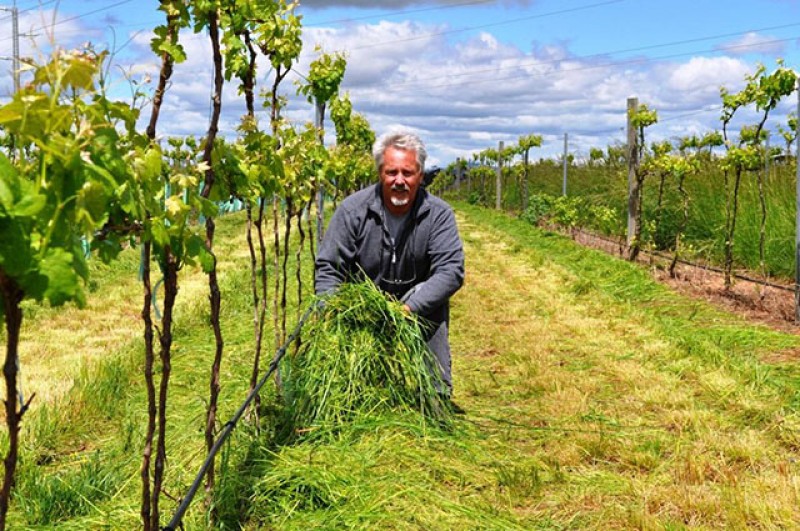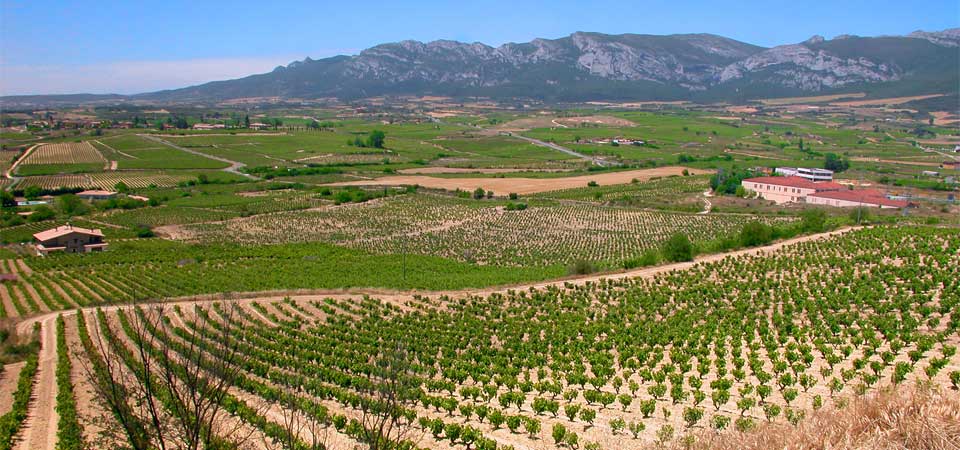Much has been written about the main white varieties and, to a lesser extent, about the better known alternative whites like verdelho, marsanne and fiano. But there is also a plethora of lesser-known varieties. Meet the kids.Most of the billions of litres of wine in existence in the world were made from a handful of grape varieties – about 30 to 50 at most – out of the 1,368 varieties identified by Jancis Robinson
et al in Wine Grapes. In fact, there are probably hundreds, if not thousands, more varieties that have not been verified as yet. For example, I have tasted three Chinese native varieties that aren’t in the book.
These mainstream varieties have found suitable environments around the globe to show their best, and grapegrowers are either reluctant or unable to (by law), experiment with other varieties.
In just about every wine growing country there are the established varietals in each area and growers stick to them, with only one or two foolhardy souls daring to try something different. Try suggesting to a French grapegrower that he (they are predominantly hes) should grow verdelho or grüner veltiner and he would probably have an epileptic fit and laugh you out of the room. Inertia rules!
Not only that, but in many parts of the Old World of wine (Europe) it is illegal to plant any variety that has not been approved by the bureaucracy that controls that area’s wine production. Try planting semillon or nebbiolo in Burgundy and you would probably end up in jail.
However, here in Australia, unfettered by historical tradition and bureaucracy, we have spade-loads of pioneering spirit and an abundance of people who are prepared to have a punt on something new. Give an Aussie winemaker a taste of a really good wine made from XYZ variety and straight away he/she will start thinking “How would that fit in with my vineyard conditions?”
The result of this is that today probably 1,500 of the nearly 3,000 wine companies in Australia have at least one wine made with an alternative or non-mainstream variety. There are even some who specialise in making and promoting alternative variety wines such as the Riverland’s 919 Wines. They make excellent wines, of which the only mainstream one is shiraz, while the rest of the portfolio are alternatives and fortifieds.
Even more so is Barossa’s Dell’uva which makes 18 different wines, 15 of which are made from alternative varieties and only three from mainstream ones.
Mountains have been written about the main white wine grape varieties, and to a lesser extent about the better-known alternative white varieties such as verdelho, marsanne and fiano. However, there is also a plethora of other lesser-known and lesser-planted white varieties around, for example the new kids on the block, which make some wonderfully interesting wines.
 Wayne Farquhar of Barossa’s Dell’uva – home to Australia’s largest range of European varieties
Wayne Farquhar of Barossa’s Dell’uva – home to Australia’s largest range of European varieties Most of the wines being looked at this time come from cooler climates and are crisper, flintier styled wines. Starting with the one sparkling wine in the tasting, Irvine Wines Sparkling Meslier, it feels like you have filled your mouth with fizzy liquid granny smith apples – oh, it is gorgeous and cleanses the palate as you swallow, lingering for ages. This is a truly unique wine as Irvine grows the only petit meslier outside of Champagne. Only 20 hectares of it are grown, and only the house of Champagne Duval-Leroy produces a varietal Petit Meslier Champagne. Thus Irvine Wines Sparkling Meslier is one of the only two such wines in the world, making it particularly rare and it retails for around a mere $30 per bottle – unbelievable.
A minute Italian white variety with a mere 128 hectares is picolit, which makes a sweet wine that was really popular with the Russian and English monarchies in the 18th century. Since then it has fallen out of favour and slowly dwindled down to today’s acreage. The main reason for its decline is that the variety is very low yielding, thereby making it uneconomical to grow. When handled well, picolit produces excellent late-picked style dessert wines such as Pizzini 2014 Picolit from King Valley and di Lusso 2013 Picolit from Mudgee. Their citrus aromas burst out of the glass and the well-balanced sweetness on the palate makes one cry out for more – a perfect way to end a memorable meal. More recently I tasted di Lusso 2006 Picolit, which has developed amazingly into an uber-rich, lush dessert wine – wow!
The Italian varietal picolit, which makes a sweet wine that was really popular with the Russian and English monarchies in the 18th century. Schönburger is the baby in this crowd, as it was created in Germany by crossing pinot noir with chasselas and muscat hamburg. It was released in 1979 and since then has taken root in Germany, England, Western Canada, Washington State and Oregon in the US, and now in Tasmania, where Bream Creek produce a very attractive wine with green beans and peas on the nose, some lychees on the palate and a wonderful gycerolly mouthfeel.
The other German variety tasted was sylvaner, which was massively planted in Germany until the 1970s when müller-thurgau started to replace it. It was the main component in the ubiquitous Liebfraumilch that tried to swamp the wine-drinking world in the 1970s, as when not strictly managed, it produces heaps of bland neutral wine. However when properly managed like in Ballandean 2014 Granite Belt Sylvaner, which is a lovely, late-picked style dessert wine, it displays beautiful honey characters on the aroma and a magnificent, non-cloying sweetness on the palate, making it a grand dessert wine.
The next variety in the line-up was arinto from Portugal where it has 24 synonyms and is used mainly in the making of the famous Vinho Verde, which swept through the Northern Hemisphere in the 1980s with its crisp, sharp, acidic taste that was a great match for summer foods. There are 4,500 hectares of this variety planted almost entirely in Portugal, making it the 118
th most planted grape variety on the planet, according to Kym Anderson’s Which Wine Grapes are Grown Where. Dell’uva Barossa Arinto 2014 is a lovely example, with crisp flavours that linger, making it a great food wine.
Verduzzo originates from the Friuli DOC (Denominazione di Origine Controllata) in Italy where despite making both dry and sweet wines, it has been slowly fading away, with only 1,520 hectares still in existence today. It is used mainly in blends with only a few producers making a straight varietal wine. The variety is almost unknown outside Italy other than the fact that there a few Australian wineries that are now growing it. Here it is planted in the cooler areas of King Valley (Pizzini), Orange (Davis Premium Vineyards – Carillion) and Mornington Peninsula (Lazzar). Being a cooler-climate variety, it has crisp to racy acidity and tight restrained flavours, which make it an interesting wine and a great aperitif.

Verdejo comes from Spain where there are around 16,500 hectares planted. It is believed that the variety originally came from North Africa to Spain some time in the 11
th century. It is a cross between savagnin and castellana blanca (which may now be extinct). For most of its history, verdejo has been used to make oxidized wine, which resembles an unfortified sherry as the grapes oxidise very easily. However over the last few years a few wineries in the have started making fresh, crisp, dry whites from it. If you see a wine designated
Rueda it must be at least 50 percent verdejo, with the balance usually being sauvignon blanc.
Verdejo has now arrived in Australia and has taken a shine to the Barossa, producing very consistent quality wines. Peter Lehmann 2014 Verdejo was crisp while Dell’uva 2014 Verdejo was a bit softer and fuller flavoured as the fruit was picked a bit riper. This pattern continued with Trentham Estate 2014 Verdejo from the Murray Darling, which was riper again and thus more floral and less crisp.
Finally, to the “big daddy” of the tasting. There are some 15,000 hectares of garganega planted in Italy, making it the 50
th most planted variety. If you’ve ever enjoyed a glass of the famous Venetian white wine Soave, you have tasted garganega as it must make up at least 70 per cent of all DOCG Soave wines. It is a vigorous, late-maturing vine, which, on rich soils, tends to produce very big crops that make thin and watery wine. However, if properly managed it produces a delicious, soft, delicate wine with hints of lemon peel and almonds. La Prova 2014 Barossa Garganega oozes citrus and almond flavours, has a steely, flinty bouquet and is an absolute belter of a food wine. Interestingly, 2012 Eccolo Garganega (another ripper) has very similar characters, but with a couple of years’ more age had softened off enough to make it a great stand-alone wine as well.
These were a few of the ‘new kids on the block’, most of which have a chequered past in their homelands due mainly to lack of TLC and attention to detail. Based on their performance so far, they have potential for an interesting, positive future here in Australia.
[box type=”shadow” ]
Dan Traucki is the wine industry consultant at Wine Assist (www.wineassist.com.au). This article was originally published in Wine Business Magazine, April 2015 Edition. [/box]